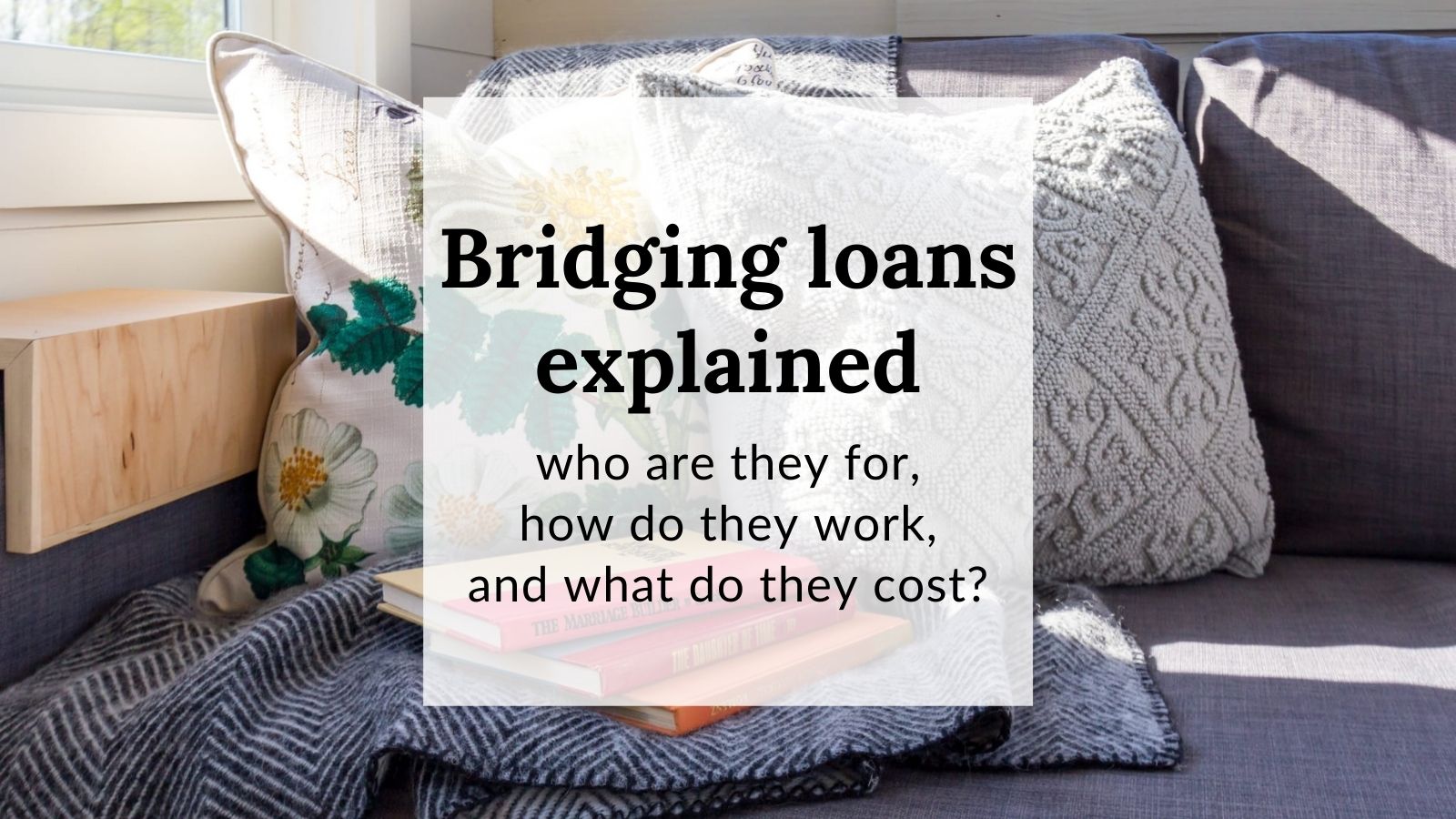
21 Mar Bridging loans explained: who are they for, how do they work, and what do they cost?
A bridging loan is a particular type of short-term property finance, covering anything between a few days to a couple of years. The loans provide an interim solution when the standard mortgage process is either unavailable or unsuitable.
Bridging loans can offer a practical route to securing a property in numerous situations. For example:
- the sale of your home is moving more slowly than your purchase
- your buyer has pulled out
- you haven’t yet accepted an offer on your home
- renovation projects that aren’t yet mortgageable
- auction purchases where funds are needed fast
- buying land to develop
In any of these scenarios, a bridging loan can literally bridge the temporary funding gap to save you from losing the property you want to buy.
So let’s explore the inner workings of bridging loans and their place in the mortgage world.
HOW DO BRIDGING LOANS WORK?
A bridging loan is secured against a property in much the same way as a regular mortgage, with fixed and variable rate options and a loan-to-value cap that’s generally around 75%.

The main differences are that bridging loans are a short-term option (generally less than two years) and have higher interest rates and fees. They’re also available with no monthly repayments, where interest accrues each day and is repaid at the same time as the loan is settled.
A bridging loan doesn’t necessarily need to be secured on the property you are buying. If you own another property with sufficient equity, you can use it as collateral: useful if the property you want to buy needs major works that make it unmortgageable in the short term.
ARE THERE DIFFERENT TYPES OF BRIDGING LOAN?
There are two types of bridging loan: open and closed. Some are regulated by the Financial Conduct Authority, and some are unregulated. Generally speaking, regulated loans cover home purchases, while unregulated loans cover investment or commercial projects.

An open bridging loan has no fixed end date, although most lenders will expect to be repaid within 24 months (some will accept a longer term of 36 months). Open bridging loans are commonplace when there’s a degree of uncertainty over dates, particularly renovation projects or when a sale has fallen through.
A closed bridging loan has a fixed period for when it must be repaid and is suitable when you’ve already contracts on your sale and have a firm completion date. You repay the loan from either the proceeds of the sale or by taking out a regular mortgage on the property you’ve purchased.
WHO CAN APPLY FOR A BRIDGING LOAN?
Bridging loans can be taken out by different kinds of borrowers, including homebuyers, landlords and property developers.

Because of the short-term nature of the loans, and with the absence of monthly repayments, different lending criteria apply. With a bridging loan, the emphasis is very much on the security being offered. Borrowers need to provide a watertight repayment strategy.
While lenders still carry out regular credit checks before approving a bridging loan, the income and credit status of the borrower is less critical than when applying for a typical mortgage.
In short, your annual salary doesn’t need to be high enough to cover the cost of two sets of monthly mortgage payments, but you must have a clear proposal over how to repay the loan.
HOW MUCH DO BRIDGING LOANS COST?
Bridging loans are more expensive than regular mortgages. As they are repaid within weeks and months rather than years, the interest is calculated monthly rather than annually.

At the time of writing this article in March 2022, bridging loan interest rates are sitting around 0.5% – 1.5% per month. By comparison, regular fixed-rate mortgages are currently available from as little as 1.25% per year.
Application fees for bridging loans are also higher, generally around 2% of the loan amount, whereas fixed-rate mortgages tend to have fees in the hundreds of pounds.
So why would somebody take out a bridging loan? Primarily because their immediate priority is to secure a particular property, even if it means paying more fees and interest in the short term.
Although increases in property values are not guaranteed, the long-term trajectory is upwards, and most borrowers take the view that the capital gain will more than outweigh the additional short-term borrowing costs.
WHERE CAN I GET A BRIDGING LOAN?
Bridging loans are available from a variety of lenders.
Some of the names you know on the high street offer bridging finance alongside their regular mortgages, and there are also specialist lenders who offer more flexible and tailored products.
Not all lenders deal directly with borrowers. Some only accept applications via financial advisers and mortgage brokers.
If you’re considering taking out a bridging loan, it’s really worth exploring all your options with a financial adviser who can scour the market on your behalf. By finding the product that fits your particular circumstances and plans, they can save you valuable time and reduce the risk of making an unsuccessful application.
What’s next for you?
If you’re considering taking out a bridging loan or would like to find out about alternative options, why not get in touch?
We have access to a wide range of bridging providers through our panel of master brokers. They can advise you on the most suitable option for your own unique circumstances, so drop us a line on 01803 554455 or email us at [email protected].
THINK CAREFULLY BEFORE SECURING OTHER DEBTS AGAINST YOUR PROPERTY. YOUR
PROPERTY MAY BE REPOSSESSED IF YOU DO NOT KEEP UP REPAYMENTS ON A MORTGAGE OR
ANY OTHER DEBT SECURED ON IT.
Approver Quilter Mortgage Planning Limited –18.03.2022

